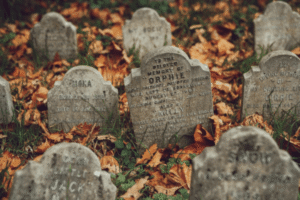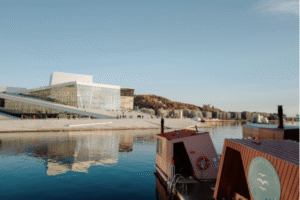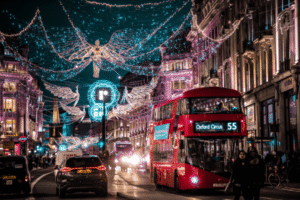Did you know that every 20th person living in Denmark owns a summer house? If you are wondering why so many Danes are investing in owning a summer house, and would like to join the club, welcome! A summer house in Denmark represents a unique Danish lifestyle focused on relaxation, family gatherings, and reconnecting with nature. Spending summers in a Danish summer house has become a cherished tradition deeply rooted in Danish culture. It embodies the simple joy of escaping everyday life. Most Danes look forward to retreating into serene landscapes where cozy cottages nestled in forests or overlooking tranquil coastlines become havens of peace. As the summer house season has arrived in Denmark, let’s uncover the hidden secrets of how to truly enjoy a summer house like a Dane, and discover which areas in Denmark are the best places to visit summer houses.
Key Takeaways
- Danish summer houses embody the concept of hygge, offering cozy, simple accommodations surrounded by nature, ideal for relaxation and family gatherings.
- Owning or renting a summer house in Denmark is culturally significant, closely linked with customs and activities during summer.
- Common activities during summer house stays include outdoor adventures like swimming, cycling, berry picking, and cooking meals outdoors.
- Denmark’s most popular regions for summer houses include North Zealand, Bornholm Island, the Jutland West Coast, Funen, and East Jutland, each known for distinct natural landscapes and unique experiences.
- Renting offers flexibility for short-term visits, while buying a summer house is suited for those planning frequent stays or retirement in Denmark.
What is a Summer House in Denmark?
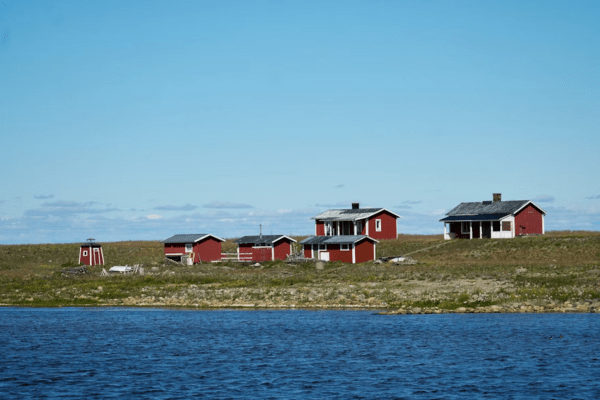
A Danish summer house, or sommerhus in Danish, is traditionally a modest, comfortable cottage, usually located close to nature. These houses, often constructed from wood, offer an authentic and cozy atmosphere. The Danish summer house perfectly embodies hygge, emphasizing simplicity and warmth over luxury and extravagance.
Cultural Significance
In Denmark, owning or renting a summer house is not simply about having a place to stay. It is deeply tied to summer traditions, family reunions, and bright evenings of the summer months. Also, it is common for many Danish families to pass their summer homes down through generations, making them treasured family heirlooms.
Danish Summer House Customs and Activities
For Danes, visiting a summer house is about slowing down, stepping away from busy routines, and reconnecting with family and friends. Activities commonly enjoyed include swimming, hiking, cycling, fishing, and simply relaxing on sunny terraces. Barbecues, outdoor meals, and gardening also enhance the overall charm.
A popular tradition also includes decorating the cottages with quirky personal touches, from handmade crafts to vintage furnishings. Danes hold a special pride in their furniture, so many of these summer house furnishings end up leaving a legacy over generations.
Another charming practice is berry-picking in the summer months. Families often spend warm summer afternoons gathering berries from the surrounding woodlands. Later, baking homemade pies or jams, making this a beloved and delicious family tradition. There are also a lot of local farms around the summer house areas that invite guests to experience berry-picking during summer.
Renting vs Buying a Summer House in Denmark
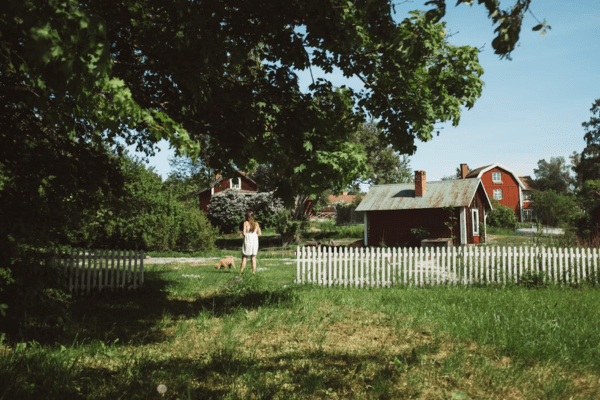
Choosing between renting or buying a summer house in Denmark depends on your preferences, financial goals, and how often you plan to visit.
Renting a Summer House
Renting provides flexibility without long-term commitment. It’s ideal for visitors who want to explore different regions or those planning short-term stays. Rental prices vary from DKK 4,000 per week for simpler homes to DKK 20,000 or more for luxurious beachfront locations.
Buying a Summer House
Buying is perfect if you envision frequent visits or plan to retire in Denmark. The prices typically start from about DKK 800,000 and can rise significantly based on location, size, and amenities. Remember, foreign buyers need special permission unless they have strong ties to Denmark, like residency or family connections.
Top 5 Regions for a Summer House in Denmark
Did you know that there are only three out of the 98 Danish municipalities where you won’t find a summer house? It shows how much the Danes are committed to travelling locally and staying at a summer house. Want to travel like a local this summer? Here are the top regions loved by Danes for summer getaways, including natural attractions and activities in each area:
1. North Zealand (Nordsjælland)
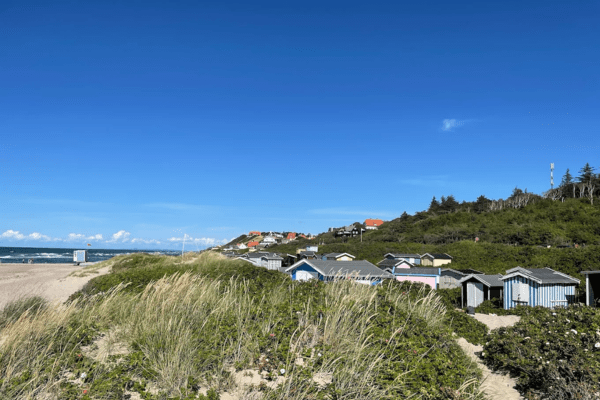
Often called Denmark’s Riviera, North Zealand features beautiful beaches and lush forests, ideal for relaxation and adventure. Enjoy scenic coastal drives, discover quaint fishing villages, and indulge in fresh seafood at local eateries. North Zealand is also famous for its charming art galleries and small boutiques, perfect for leisurely summer afternoons exploring Danish culture.
Must-Visit Places:
- Tisvildeleje Beach: Golden sands ideal for swimming and sunbathing.
- Hornbæk Plantage: Nature trails perfect for cycling and hiking.
- Heatherhill Nature Reserve: Picturesque rolling hills are ideal for family picnics.
2. Bornholm Island
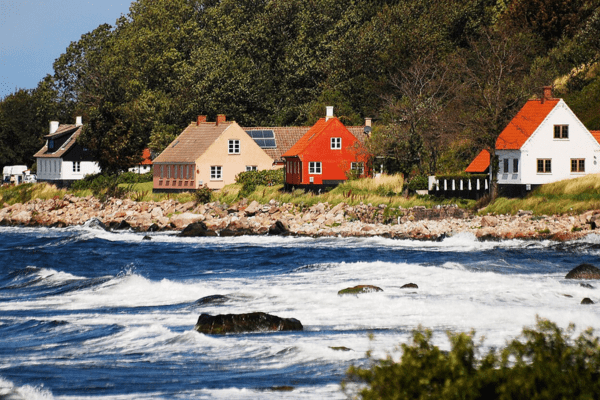
Known for dramatic cliffs and quaint villages, Bornholm provides a unique island experience. Called the “sunshine island” in Denmark, Bornholm opens its doors to many Danes seeking the warm summer sun. Visitors love exploring the island’s cycling routes and enjoying locally produced smoked fish, a delicacy in Bornholm. Art enthusiasts will also appreciate Bornholm’s thriving artistic community, evident in its numerous galleries and artisan workshops.
Must-Visit Places:
- Dueodde Beach: Renowned for its stunning white sand beaches.
- Hammershus Ruins: Majestic medieval ruins overlooking the sea.
- Almindingen Forest: Serene trails are ideal for nature lovers.
3. Jutland West Coast
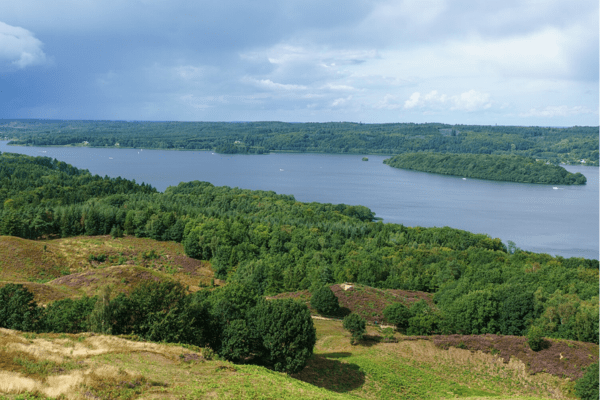
The Jutland West Coast is famed for rugged beauty and peaceful solitude, great for reconnecting with nature. Surfers enjoy the waves along this coastline, while birdwatchers admire the region’s diverse birdlife. Additionally, quaint coastal towns offer charming cafés and lively fish markets to complete your summer experience.
Must-Visit Places:
- Blåvand Beach: Popular for swimming, with safe waters and family-friendly facilities.
- Rømø Island: Wide beaches are ideal for kite flying and horseback riding.
- Thy National Park: Perfect for wildlife spotting and hiking through dunes and forests.
4. Funen (Fyn)
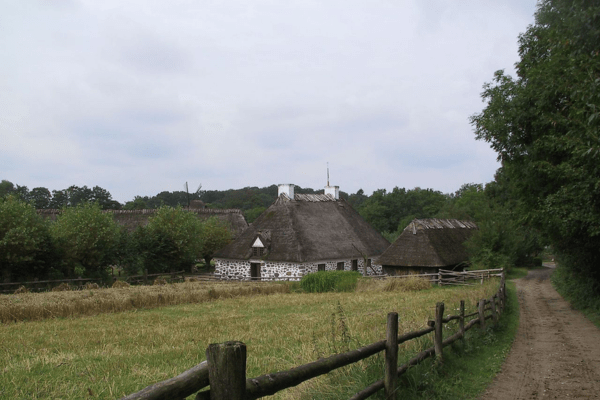
Nicknamed Denmark’s Garden Island, Funen is lush, idyllic, and family-friendly, filled with charming cottages. Delight in visiting traditional Danish villages, tasting fresh produce from local farms, and discovering artisan pottery studios. The vibrant city of Odense, the birthplace of Hans Christian Andersen, is another highlight, perfect for cultural outings.
Must-Visit Places:
- Egeskov Castle Gardens: Beautiful gardens and historic architecture.
- Fyns Hoved: Stunning coastal walks and picnic spots.
- Svanninge Bakker: Rolling hills, ideal for scenic walks or cycling trips.
5. East Jutland (Østjylland)
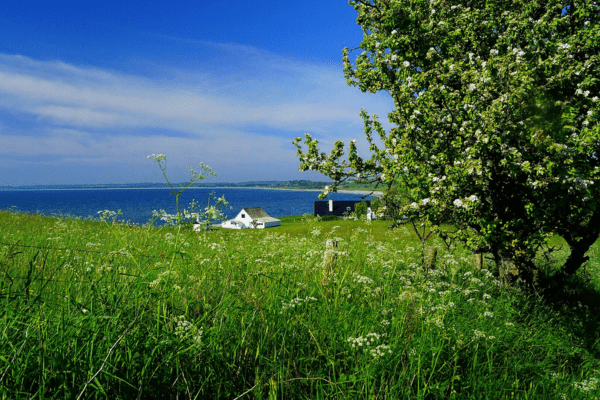
East Jutland blends beautiful coastal landscapes with vibrant, friendly towns, offering various activities for all ages. Families enjoy canoeing on tranquil lakes, exploring historic castles, and tasting delicious local cuisine. Aarhus, Denmark’s second-largest city, is nearby, offering lively cultural events, shopping, and world-class museums for a varied holiday experience.
Must-Visit Places:
- Mols Bjerge National Park: Scenic hills, trails, and wildlife watching.
- Grenaa Beach: Excellent beach with clear water, ideal for swimming and sunbathing.
- Djurs Sommerland: Denmark’s famous amusement park offering exciting rides and family fun.
Planning Your Summer House Stay in Denmark
Planning your stay in a summer house in Denmark is straightforward. Rental platforms provide a variety of options, from budget-friendly to luxurious. Many come with convenient amenities like kitchens, terraces, BBQ grills, and close proximity to beaches and forests.
When planning your stay, consider factors like proximity to the coast, local amenities, and the kind of natural scenery you prefer. Early booking is advised, especially for popular regions during peak summer months.
Conclusion
Spending your holiday in a summer house in Denmark is not just about accommodation; it is about experiencing a quintessential part of Danish culture. Whether relaxing in North Zealand’s lush forests, exploring Bornholm’s breathtaking coastline, or enjoying family fun in East Jutland, Denmark offers endless possibilities.
To make your Danish summer getaway even more special, consider Amitylux’s private tour services. With Amitylux, you can customize your trip to suit your exact travel needs, from having a private driver waiting for you at the airport to arranging local guides who will show you hidden gems around your chosen summer house destination. Amitylux can even book a Danish summer house that fits your style of relaxation. Contact us to enjoy your hassle free summer vacation in Denmark like a local!
Additionally, if you’re visiting Denmark during the summer months, be sure to check out our recent blog about the best gardens in Copenhagen. It’s an excellent read to enhance your Danish holiday experience even further. After exploring the beautiful gardens in Copenhagen, visit a summer house in Denmark to have an unforgettable and peaceful summer holiday!
Frequently Asked Questions
What is a summer house in Denmark?
A summer house in Denmark, or sommerhus, is typically a cozy cottage close to nature, embodying Danish hygge, comfort, and family traditions.
How much does a summer house cost in Denmark?
Purchasing a Danish summer house typically costs from DKK 800,000 upwards. Rentals range from around DKK 4,000 weekly for basic accommodations to significantly higher for luxury properties.
Where is the best summer house in Denmark?
Popular areas for summer houses in Denmark include North Zealand, Bornholm Island, the Jutland West Coast, Funen, and East Jutland, each offering unique natural beauty and cultural experiences.

